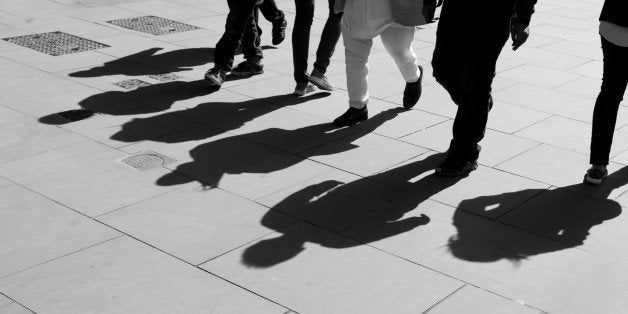
It's been more than 10 years since my immigration battle ended but the public's image of what an "illegal immigrant" is has not matured. It's time for our understanding to evolve.
Twelve years ago in 2004, when I was an undocumented immigrant myself, I made the decision to take a calculated risk: I disclosed my illegal immigrant status to the public. The danger was that there would be a backlash against me from those who were against amnesty for illegal immigrants. But I was willing to risk that for the chance to finally be part of a community and in so doing, validate my existence.
Attempting to belong to a group that was deemed undesirable was impossible because I couldn't identify with the image that represented the group. The media offered only one portrayal of what an illegal immigrant is: a Mexican man sneaking across the border. Often he was hardened by his journey; desperate, he turned to a life of crime. That image had the effect not only of lumping anyone who appeared Mexican into a offensive and inaccurate stereotype; it also invalidated my own experiences and those of the thousands of other undocumented immigrants who were not from Mexico. Never mind the rich and varied stories of immigrants from around the world; the image of the desperate Mexican illegal was intended to make ordinary Americans feel threatened and create a vigilante state.
The image of the illegal immigrant has softened in the last few years. We've even been given a less threatening label: "undocumented." Still, America has made almost no progress in how it sees us as a group. We've discarded the desperate Mexican man and replaced him with a less threatening Central American woman or child. Though her image is not as hardened, she is nevertheless a downtrodden figure, incapable of accessing her own strength.
In fact it's not her identity that makes her a pathetic attempt for national sympathy, but the context in which she appears. Like the media's staple images for narratives about Africa -- the image of the malnourished, flea-infested child or the recently ravaged African woman -- the Central American woman or child also appears helpless.
The image is also wrought with racial undertones that creates a subconscious divide between "us" and "them." As long as the face of the undocumented immigrant doesn't resemble the average white, black, or Asian-American, members of these social groups feel justified in condemning them. The truth is that illegal immigration is not unique to Central Americans.
These images tell a single, monolithic story. According to the Washington Post, there are roughly 10.9 million undocumented immigrants in the United States. While most undocumented immigrants are from Mexico, new studies show that these numbers are declining, according to the Washington Post article. The media may display such images as a tactic to evoke sympathy, but the ultimate effect is that it spurs resentment toward all undocumented immigrants. It masks the fact that undocumented immigrants vary widely in ethnicity, race, socioeconomic status, and life experience, and turns Mexican-Americans into scapegoats. It's dehumanizing.
In the early 2000s, I found that friends, school administrators, trustees and benefactors were drawn to my story because I possessed courage and because my history defied the illegal immigrant primer. While I felt like I was in the middle of a nightmare, I didn't appear downtrodden. As I saw it, maintaining a stylish and professional outward appearance was my armor against the world. If the public had not learned about my circumstances or had my appearance been pitiable, I may not have been able to maneuver through my immigration nightmare with so much support and admiration.
My own immigration journey has a happy ending. For the rest of us, however, we spend so much time disproving the image that doesn't represent us -- that of the Central American woman or child -- that we are left with no time to tell our own story.
What would happen if we removed these masks and saw undocumented immigrants in all their diversity and uniqueness? Unless we can see these 10.9 million people as the individuals they are, how can we begin to find solutions?
